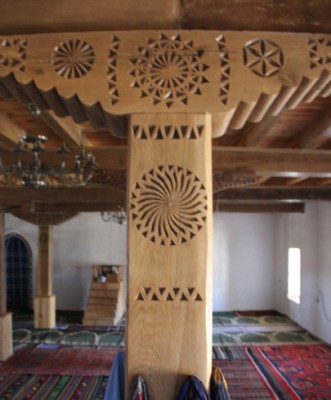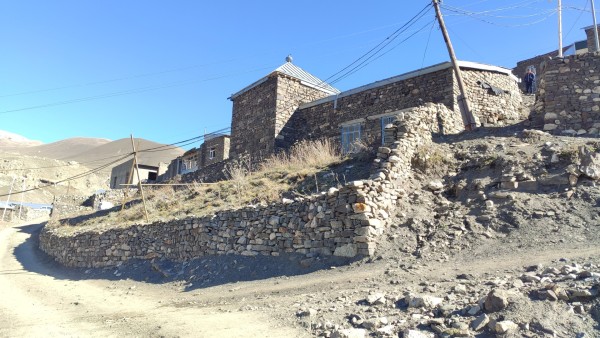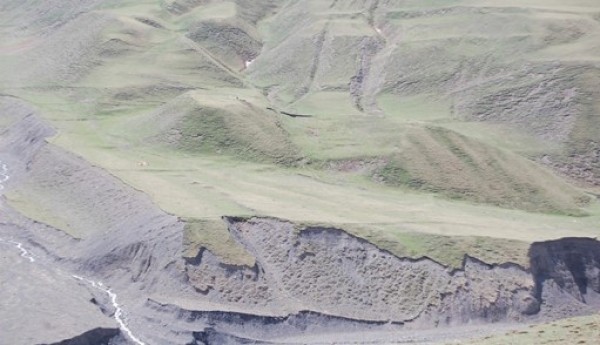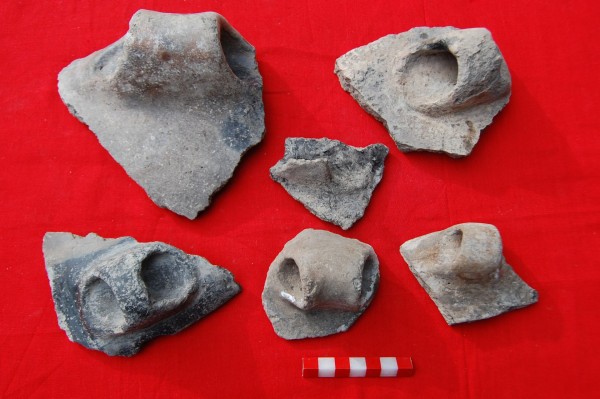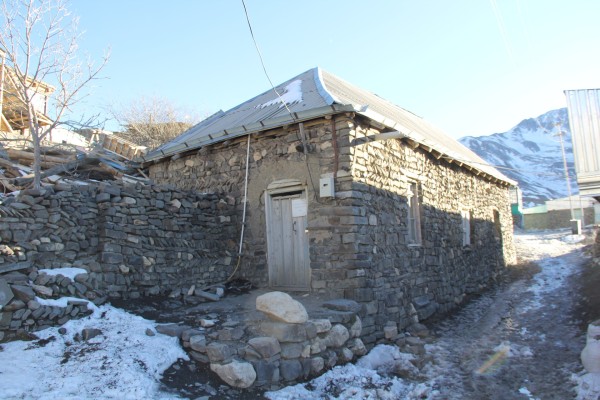
As a locally significant architectural monument (Inv. 4649), this site is under state protection (‘On the approval of the list of state protection of Historical and Cultural Monuments of the Republic of Azerbaijan, decision No. 145 of the Council of Ministers of the Azerbaijan SSR, dated 25 April 1988). The construction date and identity of the builders of the Sheikh Shalbuz Mosque are unknown. In the information published by the Ministry of Culture of the Azerbaijan SSR on 10 February 1987, the construction of the site is mentioned as in the 19th century. However, there is speculation that the shrine and mosque date to the 17th century.
According to information gathered from the villagers, the mosque once functioned as a ‘mollakhana’ or ‘madrasa’. Legend tells of a pious man named Sheikh Shalbuz, who came to Khinalig from Iraq in the 13th century, was an excellent teacher of Islam, as well as the Arabic and Persian languages, and taught students in this madrasa. Sheikh Shalbuz is also said to have had phenomenal awareness and foresight. According to other legends, he could heal patients with his touch.
In the tomb where the sheikh is buried, an ancient library fund was found, which suggests that there used to be a religious teaching centre here. From that library, printed materials, numerous manuscripts of the Koran and religious texts from the end of the 19th century and the beginning of the 20th century were discovered. Along with the numerous prayers in manuscripts and writings, medical records were also found. There are several legends about the name of Sheikh Shalbuz in Khinalig. A pier called Sheikh Shalbuz can also be found in Shah plain. In Dagestan, there is a mountain peak that is considered sacred by the Lezgi population in connection with the name of Sheikh Shalbuz. Currently, the villagers come to Sheikh Shalbuz Shrine and Mosque to pray and make vows during the month of fasting.
.jpg)
.jpg)
.jpg)
